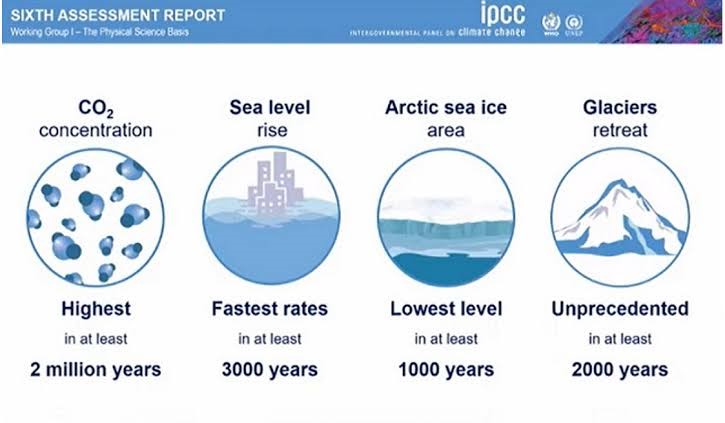Coastal Flooding Impacting Trees Species
Syllabus:
GS 3:
- Conservation , Environment and Environment Conservation
- Disaster and Disaster Management
Why in the News?
A recent study published in Frontiers in Forests and Global Change highlights the impact of tidal flooding on coastal tree species. The findings can guide forest managers in assessing risk and protecting vulnerable species.
Impact of Coastal Flooding on Trees
- Species-specific response: Some tree species benefit from coastal flooding, while others face adverse effects, challenging previous assumptions about coastal forest risks.
- Case studies: American holly thrives under increased water levels, while loblolly pine and pitch pine suffer significant damage.
- Rising sea levels: Global warming is driving sea-level rise, increasing tidal flooding risks that influence tree growth patterns.
- Environmental factors: Trees adapt quickly to changes in temperature, soil health, and water access, influencing their response to flooding.
- Migration inland: Some coastal trees are moving inland as sea levels rise, finding better conditions for survival, though new risks may emerge.
Dendrochronology and Tree Growth
- Understanding growth patterns: Dendrochronology tracks tree growth over time by analyzing tree rings, correlating them with past climatic conditions.
- Tree ring formation: Rings form thicker in favorable conditions (ample rain, sunlight) and thinner when growth is stunted due to harsh weather.
- Time stamping conditions: The method helps scientists provide chronological insights into past environmental changes affecting tree health.
- Growth responses: Haaf and Dymond studied tree growth across temperature, precipitation, and tidal water gradients to reveal species-specific responses.
- Machine learning: The study used gradient-boosted linear regression, a `machine-learning tool, to analyze complex factors influencing tree growth patterns.
Gradient-Boosted Linear Regression Insights
- Modeling complex factors: This method allows researchers to understand the combined effects of climate variables, like temperature and precipitation, on tree growth.
- Beyond correlation: Unlike simpler methods, this model captures non-linear relationships and interactions between multiple environmental factors.
- Applicability: Though specific to the mid-Atlantic region, the model can be applied globally to similar temperate regions for studying tree responses.
- Expert opinion: Pratik Karmakar of the National University of Singapore praised the method for its accuracy in predicting tree growth responses.
- Forecasting risks: The method helps forest managers predict how tree species might respond to climate change and flooding, ensuring more effective conservation strategies.
Sea-Level Rise and Tidal Flooding
- Rising rates: Sea-level rise has doubled from 2 mm/year in 1993 to today, with predictions for even higher rates in the coming decades.
- Flooding frequency: By 2050, coastal flooding is expected to triple, putting more pressure on coastal forests and vegetation.
- Species prioritization: The study helps forest managers determine which species are most vulnerable, aiding in conservation efforts.
- Loblolly forests: Coastal forests with loblolly pines may handle rising temperatures better, making them lower conservation priorities for now.
- Global impact: Over three billion people rely on coastal ecosystems, making coastal vegetation conservation essential for both ecology and human livelihoods.
Measures to Prevent Coastal Flooding in India
- Mangrove Restoration and Afforestation:
- Mangroves act as natural barriers, absorbing wave energy and reducing coastal erosion.
- Restoring mangrove ecosystems along India’s coastlines can mitigate flooding and support biodiversity.
- Building Coastal Infrastructure:
- Constructing seawalls, levees, and embankments in vulnerable areas can reduce the impact of tidal surges.
- Implementing breakwaters and tidal gates in major coastal cities like Mumbai and Chennai to protect infrastructure.
- Sustainable Coastal Zone Management:
- Regulating construction in low-lying and flood-prone coastal areas to prevent overdevelopment.
- Enforcing coastal regulation zone (CRZ) norms to ensure a buffer between development and the shoreline.
- Improving Drainage Systems:
- Upgrading drainage infrastructure in coastal cities to handle excess rainfall and prevent urban flooding.
- Regular maintenance of stormwater drains and better waste management to avoid clogging during heavy rains.
- Early Warning Systems and Disaster Preparedness:
- Strengthening early warning systems for cyclones and storm surges.Conducting regular disaster preparedness drills and building local community resilience to floods through awareness campaigns.
Site-Specific Conservation Approaches
- Local conditions matter: The study emphasizes that tree growth depends on local environmental factors, necessitating site-specific conservation strategies.
- Species-specific conservation: Some species may grow better with climate changes, while others may struggle, requiring targeted management.
- Amending current strategies: Coastal plant conservation strategies need revision to incorporate a broader range of environmental and climatic factors beyond sea-level rise.
- Future research: Continued research on non-linear relationships between climate and tree growth will support better management of coastal forests.
- Management efforts: Tailoring forest management to specific locations and conditions can prevent species loss and ensure coastal forest resilience.
Conclusion
This study underscores the importance of site-specific conditions in managing coastal forests under the threat of rising sea levels and climate change. Tailored conservation strategies can help preserve vulnerable species and maintain coastal ecosystems vital to global populations.
Mains Practice Question
Discuss the implications of rising sea levels on coastal forest species. Analyze how site-specific conditions should guide conservation strategies to protect vulnerable ecosystems under the impact of climate change.




